#the kojiki
Explore tagged Tumblr posts
Text
July Reading Wrap-Up

The amount of books I got through this much is statistically anomalous. For the most part, I really enjoyed these and some of them I think even deserve re-reads in the future. Also working on going to the library more often and getting back into that habit.
~~~~
Reclaiming The L-Word edited by Alleyn Diesel - Even though this book is about 20 years old now, it still feels relatable and an important window into part of global queer history. 4/5
The Sword-Master's Apprentice by Edward Burke - I enjoyed the story and the layout of the lessons and anecdotes far more than I enjoyed this specific writing style. 3/5
E=mc^2 by David Bodanis - Anyone who knows this blog knows that I'm not in STEM, but this book was easy to follow, interesting and exceptionally informative about the history of a topic always espoused as far too complicated for anybody to understand. 4/5
The Business by Iain Banks - My second Banks book this year and just as entertaining as the first, and the ending had me yelling at the pages. 4/5
Karate-Do: My Way Of Life by Gichin Funakoshi - One of those books where the line between anecdote, fable and reality is so deliciously blurred. 3/5
The Call Of The Wild by Jack London - That was far more brutal than I expected going in, why is this marketed as a children's book? 3/5
Birdsong by Sebastian Faulks - I've had this book for years and never opened it; what I read is so far from what I was expecting. 4/5
The Kojiki - The august deity augusted down the stairs augustly. 3/5
Kyoto's Gion Festival by Mark Teeuwen - Hands down, this is the best and most comprehensive social history of Japan I have read so far; really, really impressed. 4/5
#reclaiming the l word#the sword-master's apprentice#e=mc²#the business#karate-do#the call of the wild#birdsong#the kojiki#kyoto's gion festival
0 notes
Text
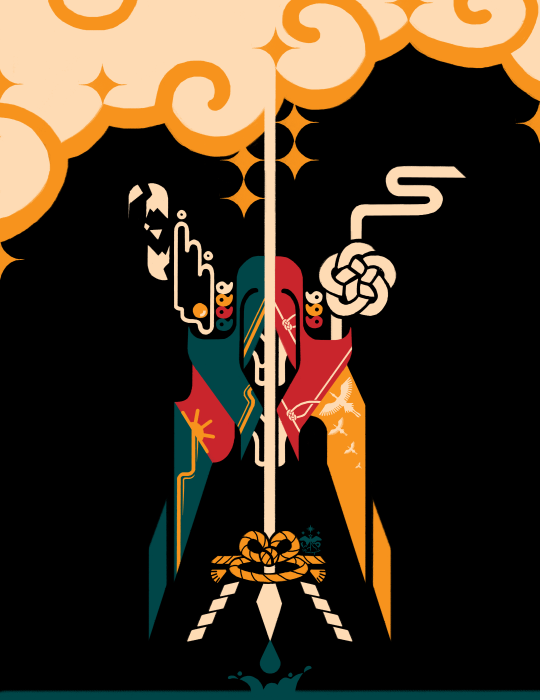
Abstract Kuniumi
Commission Info
#art#my art#artists on tumblr#shinto#izanami okami#izanagi okami#kojiki#japan#japanese mythology#I've been on a Shinto roll lately#only my faith is bringing me peace these days /lh
66 notes
·
View notes
Text

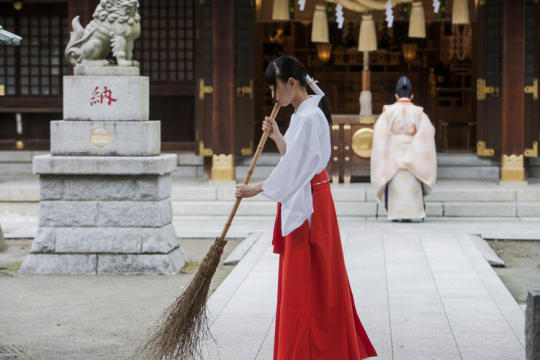


Sean bienvenidos mis queridos fanáticosarqueológicos a una nueva entrega de prehistoria Japónesa en esta ocasión nos trasladamos a la pregunta ¿Cuándo se originó el sintoísmo?. - Aunque parezca raro es una religión que se conformo durante el periódo Jōmon (17.500-300), para ser exactos a finales de dicho período y continua hasta nuestros días los dioses del sintoísmo, se les llama Kamis ( dios) ya que para los japoneses todo tenía un dios las montañas, ríos. - El sintoísmo tiene influencias chinas, coreanas de hay que tenga similitudes con el taoísmo, ¿Qué dos libros recogen la categoría de los Kamis? Son el Kojiki(713d.c) y el Nihonshoki(720d.c). - Espero que os guste y nos vemos en una próxima públicacion un cordial saludo. 🇯🇵 私の愛する考古学ファンを日本の先史時代の新作に歓迎します。今回は、神道がいつ始まったのかという質問に移ります。 - 奇妙に思えるかもしれませんが、縄文時代(17500-300)に形成された宗教であり、正確にはその時代の終わりに、今日まで神道の神であり、カミス(神)と呼ばれています。 日本人にとって、山や川にはすべて神がいました。 - 神道は中国、韓国の影響を受けており、道教との類似点があります。 カミスのカテゴリーに分類される2冊の本は何ですか? こうじき(713d.c)と日本書紀(720d.c)です。 - よろしくお願いします。次の出版物で心からのご挨拶を申し上げます。 🇬🇧 Welcome my dear archaeological fans to a new installment of Japanese prehistory, this time we move to the question, when did Shintoism originate? - Although it may seem strange, it is a religion that was formed during the Jōmon period (17500-300), to be exact at the end of that period and continues to this day the gods of Shintoism, they are called Kamis (god) since for the Japanese everything the mountains and rivers had a god. - Shintoism has Chinese, Korean influences, and there are similarities with Taoism. What two books are classified under the category of the Kamis? They are the Kojiki (713d.c) and the Nihonshoki (720d.c). - I hope you like it and see you in a next publication a cordial greeting.
#kamis#kami#japanese gods#history#japan#jōmon#jōmon period#prehistory#japanese prehistory#taoism#china#korea#religious history#kojiki#Nihonshoki#カミス#カミ#日本の神々#歴史#日本#城門#ピリオドジョモン#先史時代#先史時代日本人#道教#中国#韓国#ヒストリアレリギオーザ#コジキ#日本書紀
91 notes
·
View notes
Text
The Real Ryomen Sukuna, Everything you have to know about that man!
The king of curses, the malevolent kitchen itself, but did he really exist? Where, when, and who was the strongest curse in history? Did Gege approach this case like the others, leaving historical hints in Sukuna as well?
According to some records, Ryomen Sukuna is a figure from ancient Japanese legend who appeared in the Hida Province during the reign of Emperor Nintoku. This is the depiction of Sukuna that Jujutsu Kaisen also uses, but it's not the only one. Emperor Nintoku himself is an interesting figure in Japanese history, so if you're interested in Japanese history, definitely look him up. He is one of those buried in a kofun, a mysterious ancient structure similar to the pyramids of Egypt, but that’s enough about Nintoku.
Sukuna had two faces, four arms, and four legs, with the faces and limbs located on both the front and back of his body. His two faces and four arms make him comparable to mythological beings like Janus from Roman mythology, the god of transitions and beginnings. Like Janus, Sukuna, with his dual faces, may have symbolized opposites and duality, representing both evil and good, destructive and protective forces. His height varies depending on the source, but he was significantly taller than the average people of that time (in some sources, he reached 50 meters, while in others, he was only slightly taller than the people of his era).

He was fast, super strong, and fought with weapons. Although little is known about him, as the Nihonshoki is such an ancient source with few equals outside of the Kojiki, similar information is scarce. Speaking of his weapons, we can again find some connections with Gege’s work. His main weapon was the bow, which—though in an extreme form—also appears in the second season and the manga under the name Divine Flame (竈 カミノ, Kamino).

According to the 'Nihonshoki,' Sukuna was merely a feudal lord, not a curse or demon. As I mentioned, there’s no evidence supporting his existence, yet he was featured in major ancient writings. From this, I infer that whether or not he existed, he was important enough to be mentioned, meaning that people of the time knew his name. Even as a man, he wasn’t without credit—he defied the imperial court and caused suffering to the people, so in 377, a general was sent to defeat him. However, in Hida and Mino provinces, he was revered as a hero and worshipped as a deity in several temples. His hidden deity status in the Minashi-jinja shrine suggests that his figure might have been connected to Shinto gods in some way. The local sacred mountain, Kuraiyama, was worshipped as the dwelling place of gods, and some theories suggest that Sukuna could have been the god of that mountain. Some even believe that Sukuna introduced Buddhism to the Hida province.
Anyone reading articles here knows that Buddhism always comes up—it’s one of the core themes of Jujutsu Kaisen when it comes to fight choreography, but it’s also an integral part of the characters. You can find references in their names, or you couldn’t deny that Geto Suguru himself is a reincarnation of Buddha—or at least his head is.
Other theories suggest that Sukuna might have been a symbol of twins or brothers, or perhaps the ruler of a dynasty in Hida that rivaled the Yamato dynasty. The stories of Oousu no Mikoto and Ousu no Mikoto, or Yamato Takeru and his brother, as well as Emperor Chuai’s sons, Kagosaka no Miko and Oshikuma no Mikoto, are all examples of brother pairs whose fates intertwined with Hida and Mino provinces. (Let's not even go into this… Japanese history surpasses any soap opera.) It’s said that he helped local communities and supported the region. He was worshipped in many local temples and shrines, and in several places, he was honored as a 'kaiki,' or temple founder. Here, I’ll insert a picture of Hida and Mino prefectures, for those interested in where this person lived:

So no trace? Archaeologists think otherwise, as several items bearing Sukuna's name still exist in modern-day Japan! A special, two-faced haniwa (clay figure) was discovered near Wakayama city, dating back to the Kofun period (early 6th century). This haniwa resembles Sukuna and suggests that the cult or iconography of two-faced figures was present in ancient Japan. Furthermore, the already mentioned Sukuna Kabocha, a pumpkin found in the Hida region, is linked to Sukuna’s name, although the exact connection remains unclear. Even though it’s not directly proven to be tied to Sukuna’s legend, this plant still serves as an intriguing reference to the local cultural heritage.

To be honest, I was skeptical, I didn't think so much could be discovered, but once again I wasn't disappointed by the master. Sukuna is more than the king of curses, and Gege Akutami is more than just a mangaka, he is a true historian.
~Getam 2024.10.02
#jjk#jujutsu#kaisen#jujutsu kaisen#gege akutami#kaisend#phonology#research#anime#manga#heian#kanji#megumi#joumon#history#kyoto#buddhism#mikkyo#shounen#geto suguru#nihonshoki#kojiki#ryomen sukuna#sukuna
32 notes
·
View notes
Text
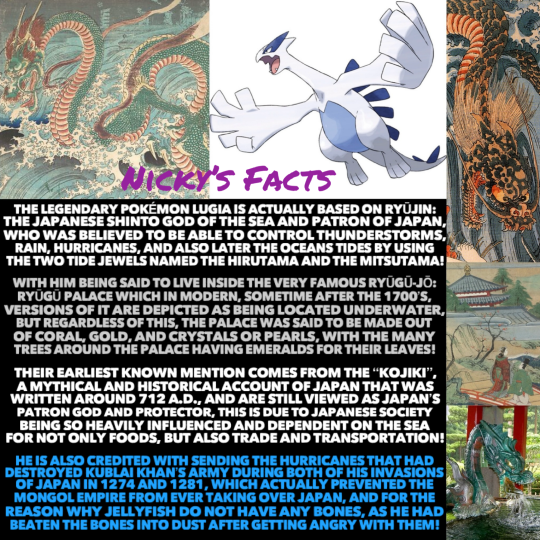
All hail the god of the Sea and protector of Japan!
🌊⛩⛈
#history#lugia#ryujin#pokemon#ryūgū-jō#japanese history#shinto#medieval#legendary pokemon#kojiki#shinto history#pokemon the movie 2000#gamer girl#god of the sea#thunderstorms#johto region#japan#mythology#medieval history#pokemon silver#pokemon soulsilver#game freak#nickys facts
14 notes
·
View notes
Text

180124
the soul king
photos / collage by Alexei Siozov
53 notes
·
View notes
Text

De como un hombre gentil desposó a la bella dama Yakami gracias a una liebre blanca
Hace mucho tiempo, vivió en la antigua provincia de Inaba (hoy correspondiente a la parte oriental de la prefectura de Tottori), una hermosa dama de nombre Yakami. Era conocida en todo el país por su belleza y gentileza, y esperaba casarse con un hombre parecido a ella, de buen carácter y noble corazón.
Como era de esperarse, tenía pretendientes por todas las provincias, que viajaban todos los días rumbo a su casa para pedir su mano en matrimonio; pero ella los rechazaba por no tener pruebas fehacientes de su bondad.
Entre sus muchos pretendientes se encontraban ochenta y un príncipes, todos ellos hermanos. Este gran grupo de príncipes también eran muy populares, pero por un motivo contrario: eran conflictivos y constantemente peleaban entre ellos y con otros hombres. Solamente el último de los hermanos, el más joven, era amable y siempre trataba de evitar que sus hermanos pelearan. Por ello, era odiado, y por su juventud, era maltratado y abusado.
Tras largas discuciones, los ochenta hermanos decidieron viajar a Inaba para solicitar (más bien reclamar) la mano de la princesa. El hermano menor, cansado de las vejaciones y maltratos, deseaba quedarse en su hogar y aprovechar la ausencia de sus hermanos, pero estos lo obligaron a viajar con ellos como su sirviente, y cargar su pesado equipaje. Además, deseaban molestarlo, pues sabían que él también amaba a la dama Yakami, y querían verlo deprimido cuando uno de ellos obtuviera su mano en matrimonio (todos se creían merecedores de su mano, pero sólo uno podría obtenerla).
Durante el largo viaje, las burlas y maltratos hacia el hermano menor no pararon. El equipaje era tan pesado que en muchas ocasiones se quedó atrás y sus hermanos ya habían decidido abandonarlo en cuanto tomaran un barco en el cabo Keta, en Ishikawa.
Justo en ese sitio, los príncipes estaban por abordar un navío cuando escucharon unos lamentos cerca de la costa. Curiosos, se acercaron y buscaron la fuente de aquellos gritos lastimeros, incluyendo el hermano menor, quien encontró un poco de distracción en aquel llanto. Pronto localizaron a una liebre sin pelaje. Los hermanos le preguntaron al animal el motivo de su falta de pelaje; entre lágrimas, la liebre contó su historia:
"Estaba yo en la isla Oki y quería viajar hasta acá, pero el mar es muy ancho y no podría nadar, sería demasiado cansado. Así que se me ocurrió, tramposamente, pedir a los cocodrilos que se formaran para caminar sobre ellos y cruzar. Por supuesto que no les dije mi objetivo; les dije que quería contarlos para ver cuantos de ellos había en el mar. Corrí a toda prisa y, cuando llegué al último cocodrilo, me burlé de ellos por su ingenuidad. En represalia, ese último se comió mi pelaje y me ha dejado con la piel herida. ¡Ayúdenme por favor!"
Los ochenta hermanos se burlaron de ella y le aconsejaron bañarse en el mar salado, y después subir a una colina para que el aire le hiciera crecer el pelaje. Satisfecha, la liebre corrió hacia el mar, y luego hacia la colina.
El joven hermano admiraba la velocidad de la liebre cuando sus hermanos ya lo habían abandonado. Sin poder alcanzar el veloz navío, se quedó en la costa a meditar sobre su desgracia y retomar la fuerza para volver a casa. A pesar de que sus malvados hermanos ya no estaban para atormentarlo, se lamentaba por haber perdido la oportunidad de, al menos, contemplar la belleza de la dama Yakami. Cuando estaba a punto de ponerse de pie para volver, de nueva cuenta se escuchó la voz de la liebre:
"Oye, tú. ¡Tus hermanos son unos malvados, me engañaron! En cuanto el agua salada y el aire de la colina tocaron mi piel, sentí un dolor espantoso y mis heridas ardieron aún más. Ellos no me ofrecieron ningún remedio, solamente se burlaron de mí, y veo que de ti también."
El joven dejó de sentir pena por él mismo y se compadeció de la liebre, que parecía ser más desgraciada que él. Así que se dirigió a ella con palabras amables:
"Querida liebre, lamento lo que mis hermanos te hicieron, ellos son así, desgraciadamente no pude advertirte. Piensa que con esto has pagado por el acto tramposo que hiciste con esos cocodrilos. Lo que yo te recomiendo es bañarte en agua dulce y revuélcate sobre el polen de las flores, esto sí que sanará tus heridas".
La liebre agradeció y de nueva cuenta saltó a toda velocidad rumbo a un arroyo rodeado de flores. Al instante, sus heridas sanaron y su pelaje comenzó a crecer.
La liebre buscó al joven hermano, que se disponía a caminar de vuelta a su casa. Agradecida por el buen consejo, el animal, ahora resplandeciente gracias a su creciente pelaje blanco, insitió al muchacho para que no abandonara el camino rumbo a Inaba, pues ella lo ayudaría a conseguir la mano de la dama Yakami. Dudoso, el joven confesó a la liebre:
"Amiga mía, mis ochenta hermanos están decididos a casarse con ella, no tengo oportunidad. Además, ella pide una prueba fehaciente de la bondad de uno, y yo sólo soy un hombre, ¿qué cosas buenas podría yo haber hecho para merecer su amor?". La libre sonrió y exclamó:
¡Yo, yo soy esa prueba! Gracias a ti, recuperé mi blanco pelaje. Y también puedo comprobar que tus hermanos son ruines, y si la dama se casa con uno de ellos, solamente sufrirá maltratos. Te acompañaré a Inaba, y verás que la dama Yakami te desposará".
Entusiasmado por las palabras de la liebre, el príncipe volvió al camino y se apresuró a tomar un barco. En poco tiempo, alcanzó a sus hermanos, que aún se burlaban de él y de la liebre. Cuando estaban los ochenta y uno frente al palacio de Yakami, ésta se asomó por las puertas shōji para verlos; casi inmediatamente, su mirada se cruzó con la del hermano más joven y se prendó de él. La liebre ni siquiera tuvo que intervenir para comprobar la gentileza y bondad del muchacho.
A pesar de la furia de los ochenta hermanos, el joven y la dama Yakami se desposaron, y la liebre agradecida procuró la abundancia y fertilidad en el matrimonio de los enamorados.
Leyenda del Kojiki.
www.mitosjpenespanol.tumblr.com
Fuente de la imagen aquí.
Lee mitos coreanos.
Lee mitos griegos.
Conoce la magia de los símbolos del Tarot.
3 notes
·
View notes
Text
Botanic Tournament : Cherry Blossoms Bracket !
Round 1 Part 1 Poll 3
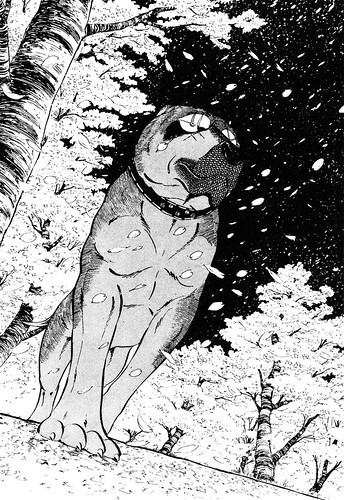
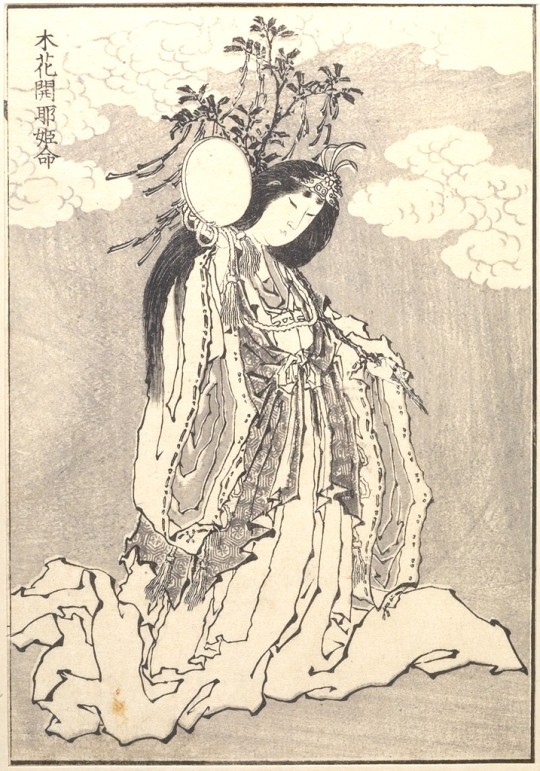
Benizakura means "crimson cherry blossom"
Konohananosakuya-hime can be translated as "cherry tree blossom blooming princess"
#tournament polls#botanic tournament#cherry blossoms bracket#round 1#ginga#ginga nagareboshi gin#hopeanuoli#benizakura#ginga benizakura#konohana#konohananosakuya-hime#konohananosakuya#ko-no-hana#sengen#sakuya-hime#sakuya hime#asama no okami#kojiki#nihon shoki#silver fang
27 notes
·
View notes
Text
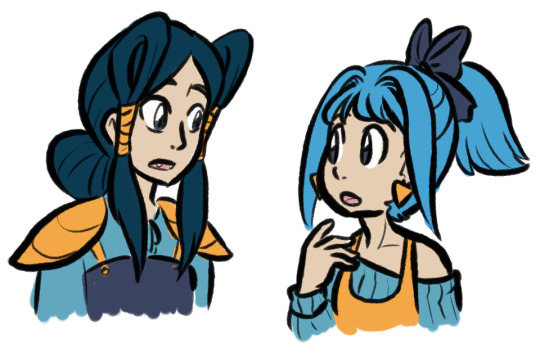
When I bought my copy of Alpha Sapphire it had a previous owner's save data, but the file had the default name 'Brendan' and like a dozen Pokemon. Like this guy had one badge. Josh the Boyfriend did the busywork of getting that file to the name rater, and from there I named them all and shoved them into the bank. I just beat the Delta Episode in my own file, so now I'm finally putting those original refugees back in. Kojiki finally gets to meet his big sister Mae. She's named and modeled after the Sapphire player character because her OT is 'Brendan' and I felt like that fit. Although, Hitorigami, who was the sacrifice from that file, is future-themed so maybe all those Pokemon should also have outfits that match? Or not. I don't know yet. So this is just a tentative design, I just wanted to commemorate Mae coming home.
EDIT: accidentally posted this to Popkas and deleted it augh
10 notes
·
View notes
Text
I did it i wrote the 2nd chapter of my thesis!!
#arguing whether godzilla coukd classify as a dragon is one of the highlights#also i love kojiki and nihongi best totally factual chronicles ever#thesis tag#caws
3 notes
·
View notes
Text

Ouji to Kojiki I
8 notes
·
View notes
Text

Buddhist Temple in the Kojiki-Yato neighbourhood of Yokohama, Japan
Japanese vintage postcard
#buddhist#japan#historic#temple#kojiki#photo#briefkaart#vintage#sepia#photography#carte postale#postcard#postkarte#neighbourhood#postal#tarjeta#ansichtskarte#old#ephemera#postkaart#yato#japanese#yokohama
7 notes
·
View notes
Text
just bought a translation of an ancient japanese text (the kojiki) and they translated all of the names literally i think im in hell. what the fuck do you mean "ripening rice ears lad" that is fucking hiko-ho-no-ninigi im so pissed off
5 notes
·
View notes
Text

Cheeky Kojiki
#kojiki#yokai#izanami#izanagi#japan#art#tatlockart#digtial art#character#creation#myth#mythology#folklore#oni#whale#tanuki#koi#sakura#cherry blossom#island#salamander#gods#god#kami#japanese gods
5 notes
·
View notes
Text

Dishonor to Ghidorah, the false king of lightning!⚡️
🐲🐲🐲
#history#ghidorah#tomoyuki tanaka#yamata no orchi#japanese mythology#movie history#godzilla#king of the monsters#kaiju#kojiki#japanese history#shinto#japan#dragon#ghidorah the three headed monster#monsters#movies#1960s#mythological history#toho studios#monsterverse#venus#mythological creature#behind the scenes#ichi#ni#kevin#nickys facts
15 notes
·
View notes
Photo
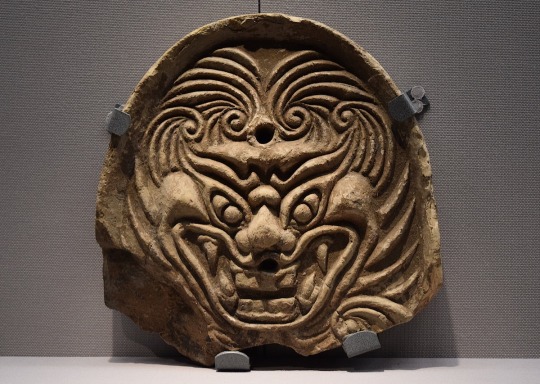
Los fantasmas en el antiguo Japón
Los fantasmas (obake o yurei) aparecen en el folclore y la literatura japonesa antigua, normalmente en cuentos con una moraleja pensados tanto para advertir como para entretener, pero también eran un elemento importante del culto a los antepasados. Si no se honraba a los miembros fallecidos de una familia, podían causar estragos en la vida cotidiana de quienes los habían olvidado. No había mucho que se pudiera hacer para evitar a los fantasmas, demonios y duendes, y la única salvaguarda contra el daño era rezar o confiar en la protección de los dioses sintoístas o Buda. Sin embargo, estos espíritus no siempre son malignos y sus poderes pueden anularse; a veces incluso pueden convertirse en buenos si se les somete a los hechizos y rituales adecuados.
Lire la suite...
3 notes
·
View notes